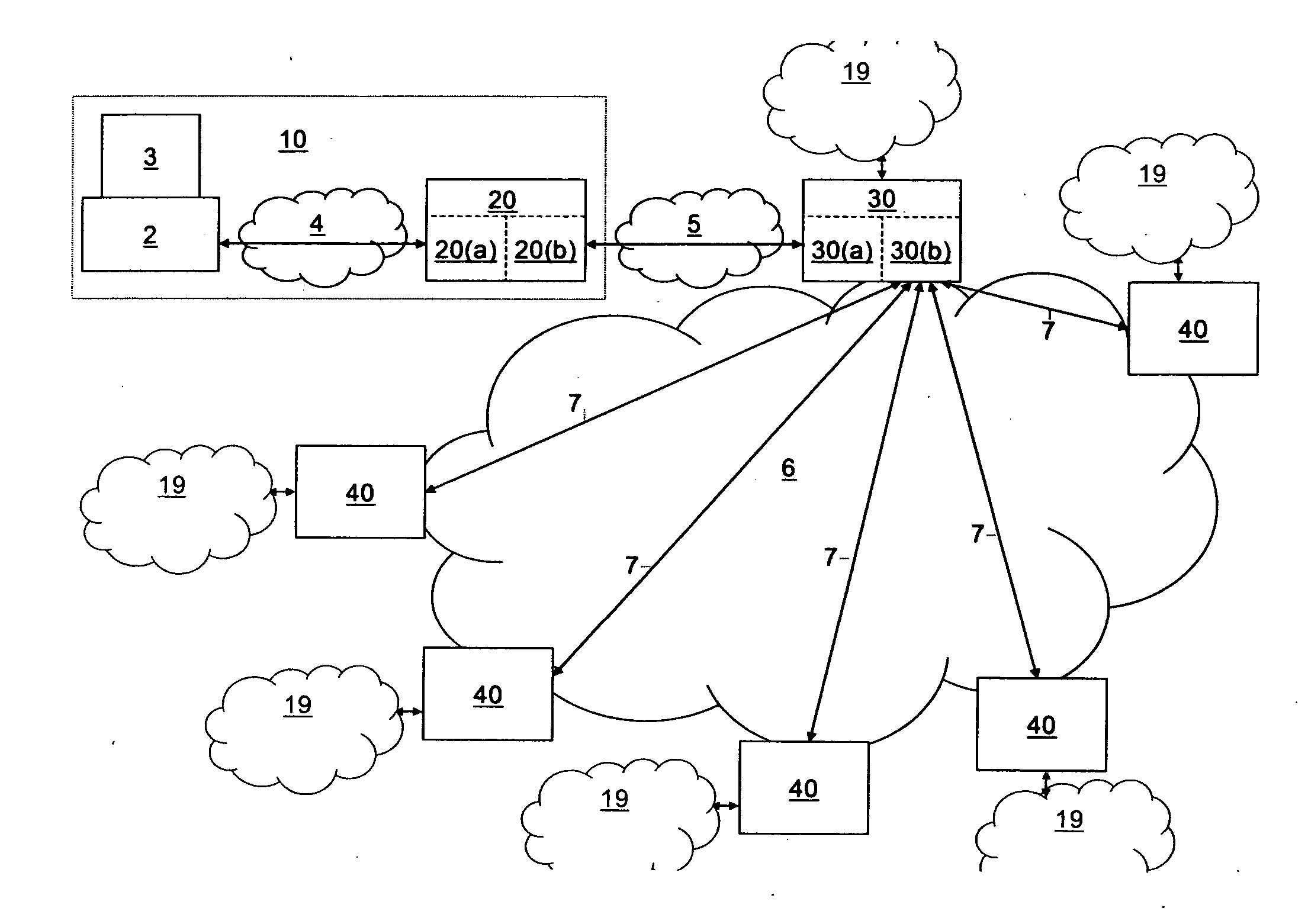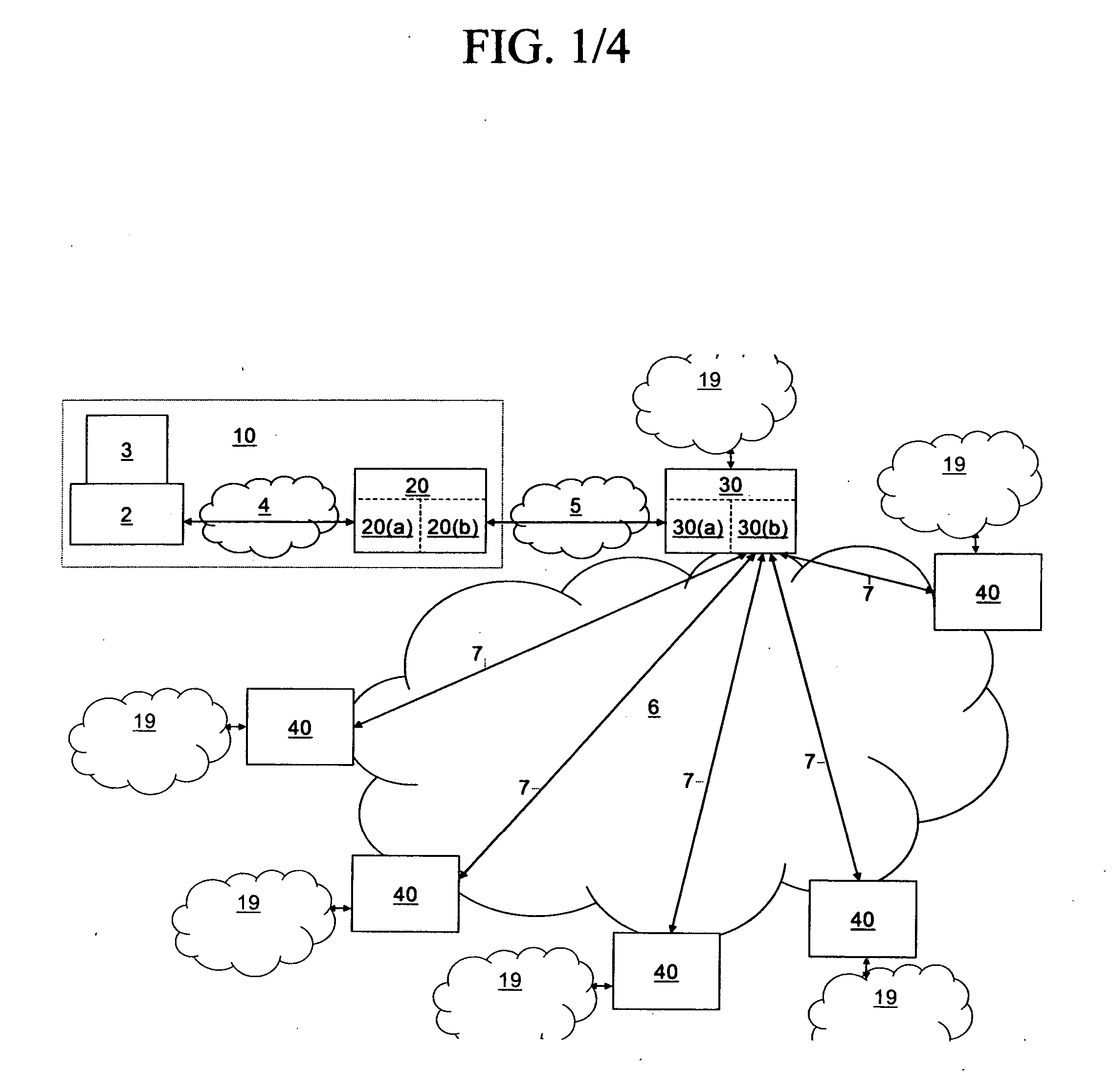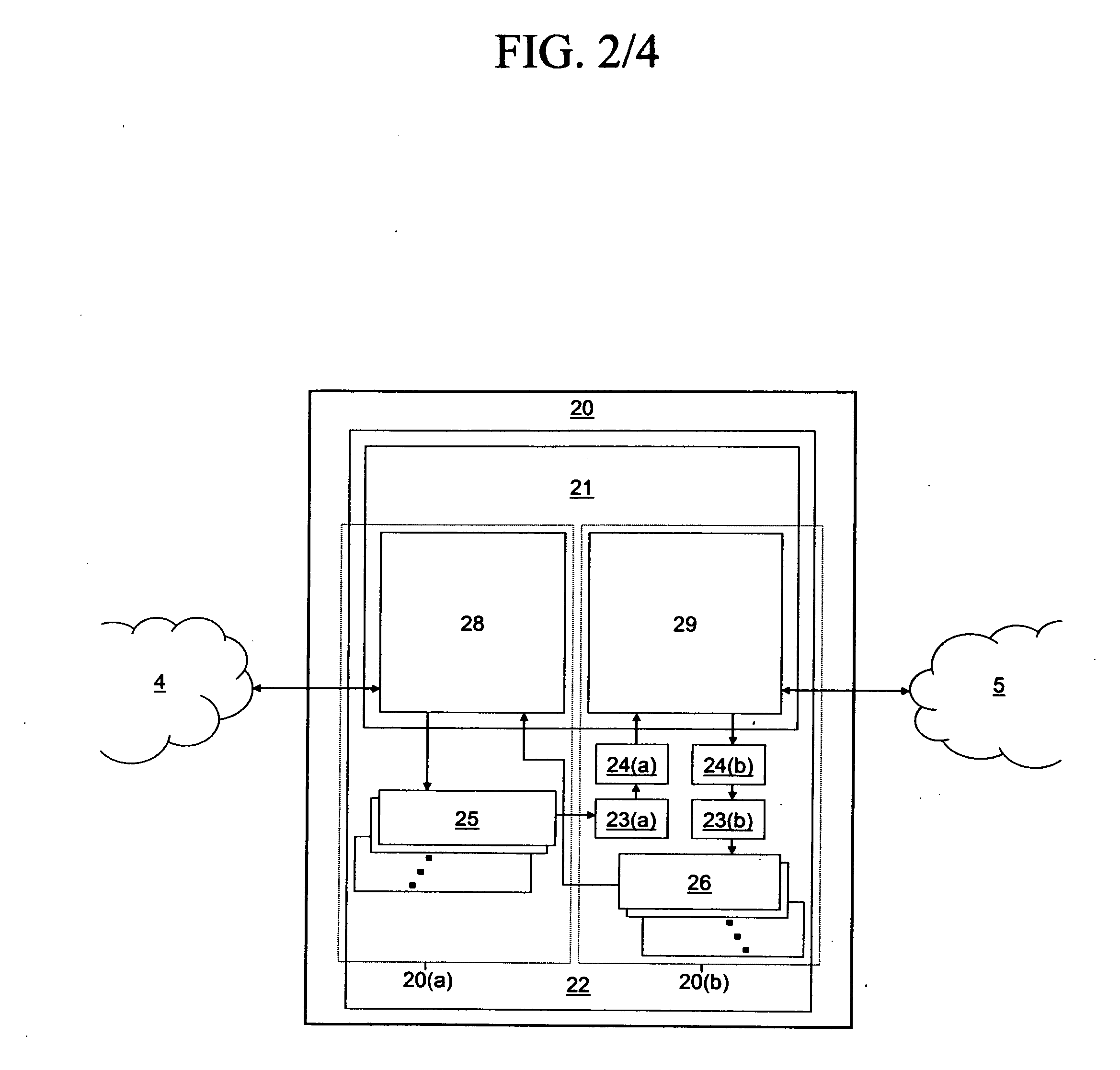Automated, transparent and secure system and method for remotely managing network elements
a network element and remote management technology, applied in the field of network management systems, can solve the problems of significant service disruption, cost and complexity of implementing and managing security protocols for networks, and it is economically feasible for any single network operator to build its own physical network, and achieves cost-effective implementation, flexible and cost-efficient management, and reliable and cost-effective results
- Summary
- Abstract
- Description
- Claims
- Application Information
AI Technical Summary
Benefits of technology
Problems solved by technology
Method used
Image
Examples
Embodiment Construction
The invention is described herein via illustrating the novel concepts of the present invention and the operation of a preferred embodiment thereof via a detailed description of the drawings.
Symbols and notations used in the drawings:
[0040] In FIG. 1 boxes represent network elements, such as routers or switches, generally referred to as network devices. [0041] A box drawn with a dotted line indicates that the set of objects inside such a box form an object of higher abstraction level, such as, in FIG. 1, a computer 2, a LAN 4 and Portal 20 forming together a NOC 1. [0042] Clouds represent an arbitrary network of a given class, e.g. LAN, WAN, SDH sub-network or a customer network. [0043] Arrows between nodes in the drawings represent a logical communication path, and may consist of one or more physical wires. [0044] Lines or arrows crossing in the drawings are decoupled unless otherwise marked. [0045] Three dots between instances of an given object indicate an arbitrary number of ...
PUM
 Login to View More
Login to View More Abstract
Description
Claims
Application Information
 Login to View More
Login to View More - R&D
- Intellectual Property
- Life Sciences
- Materials
- Tech Scout
- Unparalleled Data Quality
- Higher Quality Content
- 60% Fewer Hallucinations
Browse by: Latest US Patents, China's latest patents, Technical Efficacy Thesaurus, Application Domain, Technology Topic, Popular Technical Reports.
© 2025 PatSnap. All rights reserved.Legal|Privacy policy|Modern Slavery Act Transparency Statement|Sitemap|About US| Contact US: help@patsnap.com



